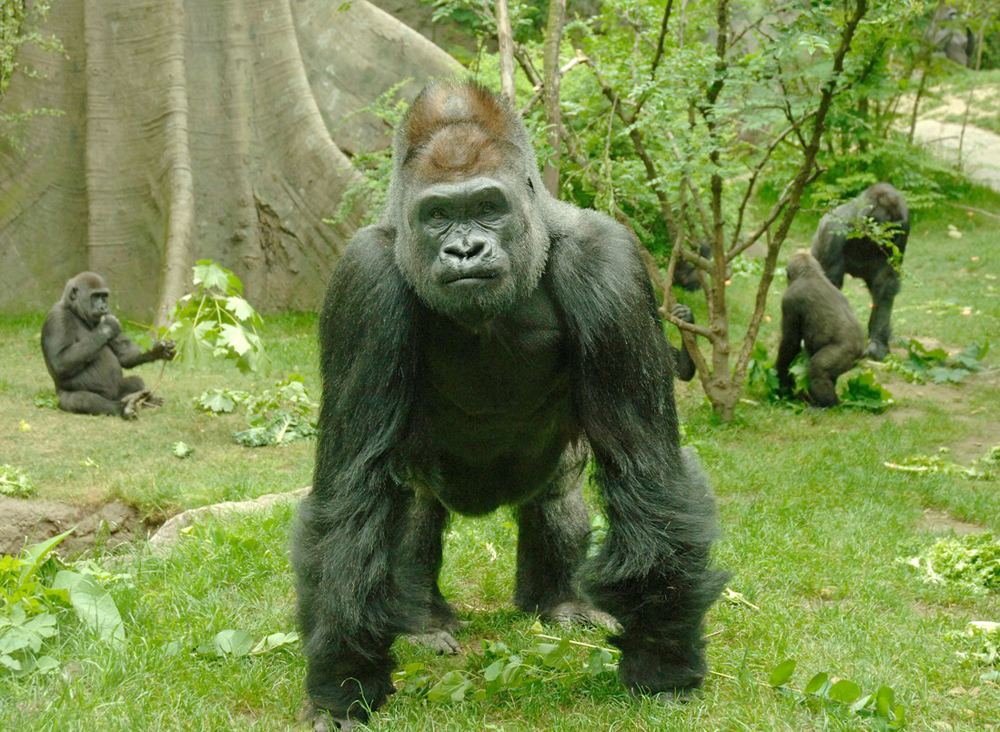Gorillas, the largest of the primates, are among the most captivating and majestic creatures in the animal kingdom. Found primarily in the rainforests of Central Africa, these gentle giants live complex lives that offer profound insights into the natural world. Understanding gorilla life not only enhances our appreciation of these incredible animals but also underscores the importance of their conservation.
Habitat and Social Structure
Gorillas inhabit the dense rainforests of Africa, with two primary species—the Eastern Gorilla and the Western Gorilla. Eastern Gorillas are further divided into the Mountain Gorilla and the Eastern Lowland Gorilla, while Western Gorillas include the Western Lowland Gorilla and the Cross River Gorilla. Each species and subspecies has adapted uniquely to its environment, showcasing the diversity of their habitats.
Gorillas are social animals that live in groups known as troops or bands. These groups are led by a dominant male known as the silverback, named for the distinctive silver hair that develops on his back as he matures. The silverback is responsible for the safety and well-being of the troop, which typically consists of several females, their offspring, and sometimes younger males. Within the troop, gorillas exhibit a range of social behaviors, including grooming, playing, and vocalizing, which help strengthen social bonds and maintain group cohesion.
Diet and Feeding Behavior
Gorillas are primarily herbivorous, with their diet consisting mainly of leaves, stems, fruit, and flowers. They are known for their impressive foraging skills, using their strong hands and arms to strip leaves from branches and to dig up roots. Despite their size and strength, gorillas are gentle giants with a diet that is largely plant-based, which supports their massive bodies.
Mountain Gorillas, in particular, have adapted to their high-altitude habitat by consuming a diet rich in fibrous plants. In contrast, lowland gorillas have a more varied diet that includes a wider range of fruits and insects. Gorillas spend a significant portion of their day foraging for food, and their feeding behavior is crucial for their survival and overall health.
Communication and Behavior
Gorillas communicate using a range of vocalizations, body language, and facial expressions. They use grunts, roars, and hoots to convey different messages, such as alerts to danger, calls for attention, or expressions of contentment. Their body language, including gestures and postures, also plays a critical role in social interactions and maintaining group harmony.
Play is an important aspect of gorilla behavior, especially among young gorillas. Playful interactions help young gorillas develop physical and social skills, which are essential for their future roles within the troop. Adult gorillas also engage in play, which serves to strengthen social bonds and provide a means of stress relief.
Conservation Challenges
Despite their fascinating lives, gorillas face significant threats from habitat loss, poaching, and disease. Deforestation for agriculture and logging has drastically reduced their natural habitat, making it difficult for them to find food and shelter. Poaching, driven by the illegal wildlife trade and human-wildlife conflict, poses a direct threat to gorilla populations. Additionally, diseases such as Ebola and human-transmitted illnesses have had devastating effects on gorilla communities.
Conservation efforts are crucial to protecting these remarkable animals and their habitats. Organizations and governments are working together to create protected areas, combat poaching, and raise awareness about the importance of gorilla conservation. By supporting these efforts, we can help ensure that future generations will continue to be amazed by the grandeur of gorillas.
Gorillas, with their complex social structures, impressive physical capabilities, and gentle nature, are a testament to the wonders of the animal kingdom. Understanding their lives and the challenges they face highlights the importance of preserving their habitats and supporting conservation initiatives. By doing so, we contribute to the survival of these magnificent creatures and the preservation of the rich biodiversity of our planet.
BY NIKUZE NKUSI Diane





